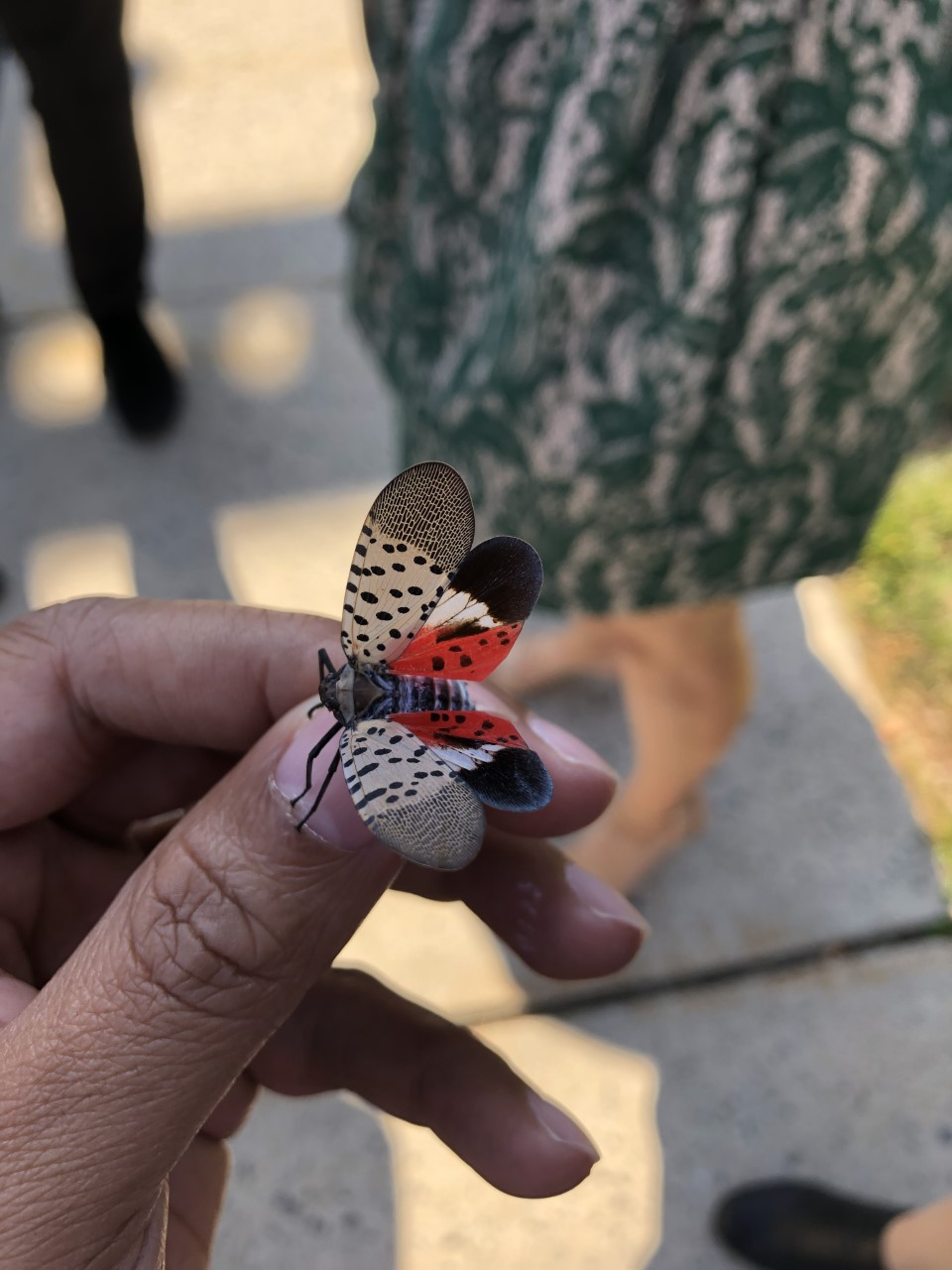MORGANTOWN—The spotted lanternfly is tough to miss, but easy to mistake for a colorful moth to those unaware of this invasive species’ short history in the United States.
However, the detrimental effects it carries with it is why entomologists are encouraging people to know what to look for and squash them on sight.
“This is a new pest in West Virginia and it is possible for us to eradicate spot populations,” Kristen Wickert, spotted lanternfly coordinator and plant pathologist for the State Department of Agriculture. “That way, we can slow the spread of it.”
The insect was initially brought to Berks County, Pa., in 2014. The insect had laid eggs on landscaping stone, which was ultimately imported into the United States.
It has since spread across Pennsylvania and into West Virginia, specifically in Berkeley, Mineral and Jefferson counties. The species has also been detected in Ohio, Maryland, Virginia and New York.
Carlos Quesada, WVU extension assistant professor and entomology extension specialist, said the spotted lanternfly feeds on about 70 different plant species.
This habit threatens several commodities including hardwood, apples, peaches, grapes and maple syrup. When tens of thousands of the species feed on a tree, they steal the plant’s valuable moisture and sugars, preventing the plant from maintaining foliage and producing seeds.
“It has preferences for what it likes to feed on, such as an invasive tree species called tree of heaven which it establishes on,” Wickert said. “Then, it will move on to other plants that we care about.”
The insect has also become a nuisance pest, especially in high populated areas.
“They’re larger than an inch and so they’ll jump onto people’s plates at restaurants and outdoor seating,” Wickert said. “They create a lot of debris when their thousands of bodies die on the sidewalk [and] they also secrete a honeydew that will rain down from the trees and will cover you in a sticky syrup.”
Although being covered in syrup or scooping one out of soup is a surefire way to be alerted to its presence, the insects are easy to spot without suffering these inconveniences.
Because of their size and color, the lanternfly is hard to miss when it reaches adulthood between July and December.
Quesada said an adult spotted lanternfly has a black body, four wings and is about one inch long. Its forewings are gray with black spots at the base and black with gray veins at the tips. The hindwings are red with a black spot near the base and have a white band in the middle and black tips.
Before reaching adulthood, it has four developmental stages that all differ from one another.
Quesada said the first, second and third nymph developmental stages have black legs and bodies and are covered in bright white spots. The fourth nymph stage has a black and red body.
“If you live in an area where they are [established], check for and remove all stages of the insect before you travel or move material,” Quesada said. “Eggs should be smashed [and] trapping can be effective during the nymphal stage.”
Because the tree of heaven is a preferred host of the species, Quesada also recommends removing any nearby, which would decrease the lanternfly populations.
Although a daunting task, eradicating invasive species is not impossible, and history is proof of that.
A previous invasive species, known as the gypsy moth, was brought over from Europe in the 1800s in an effort to bring the silk industry to the United States.
When that endeavor backfired, the species was inappropriately released into the environment. It remained an invasive species for decades and its detrimental impacts did not go unnoticed.
“There’s actually pictures of entire forests that have no foliage on them, even though it’s summertime, because these moths ate everything,” she said. “And now we don’t have that problem because time and research was able to catch up and we were able to control the species.”
“So, yes, there is hope,” she said.
Several methods are currently being used to eradicate the species, including physical traps such as sticky bands or circle traps to physically capture and kill the insects. Chemical pesticides are also used on the insect and herbicides are used on the invasive tree of heaven which the insect prefers to feed on.
“The insect directly will suck up the poison and die with hopefully little to no impact on other species,” Wickert said.
Research into how to stop the spread is also being conducted, such as the possibility of disrupting the insects’ pheromones they may use to communicate.
It doesn’t take being an entomologist to help stop the spread. The lanternfly poses no danger to humans and if one is seen, the best course of action is simple:
“They should first try to kill it,” Wickert said. “Because it jumps and they can jump about 5 feet; they’re pretty amazing acrobats. And so, the first best thing to do is to try to kill it and be aware that it can jump.”
Wickert said she recommends killing the insect from behind to prevent it from jumping onto someone. Once killed, it is important to take a photo and report the sighting via email to Bugbusters@wvda.us.
TWEET @DominionPostWV




